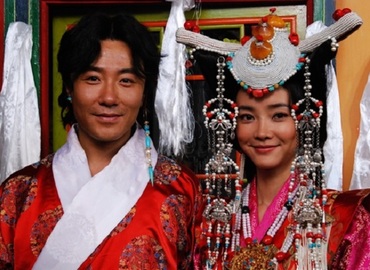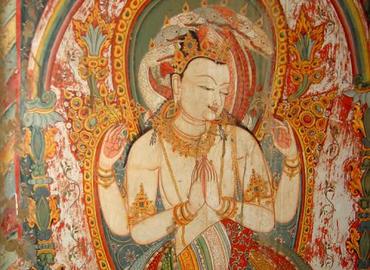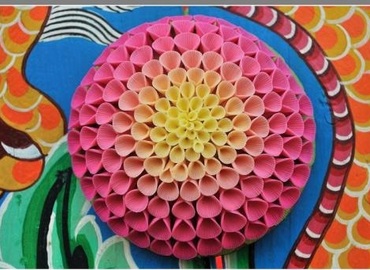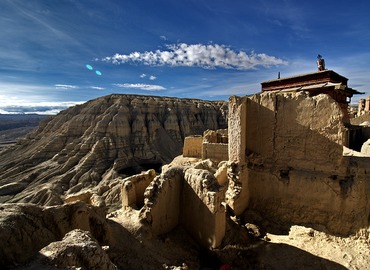Tibetan Mask - Show Tibetan Culture with Rich Expressions
- Catherine
- Last Updated : 05/20/2025
Tibetan Mask, transliterated as "Ba" in Tibetan, is primarily used in religious dances of Tibetan Buddhism and Tibetan opera of folk performances. For thousands of years, colorful masks in various forms have deposited the essence of Tibetan culture. It originated from the mysterious religious world. As the years passed, it developed a wider range of art forms.
Tibetan mask is a cultural carrier, sustenance of a lot of good wishes. In Tibet, masks can be roughly divided into religious masks and opera masks. Folk Tibetan opera masks are full of religious significance, which is due to the special cultural background of Tibet. These two kinds of masks have been preserved for a long time as a kind of traditional culture while enriching people's lives.
Origin
Tibet's primitive religion, Bon, had directly influenced the formation of Tibetan masks. As the ancient Bon religion had a deep-rooted position in the hearts of the Tubo ancestors, the later Buddhism and Bon religion had been on par with each other for a long time. As a result, the two cultures competed with each other and merged with each other.
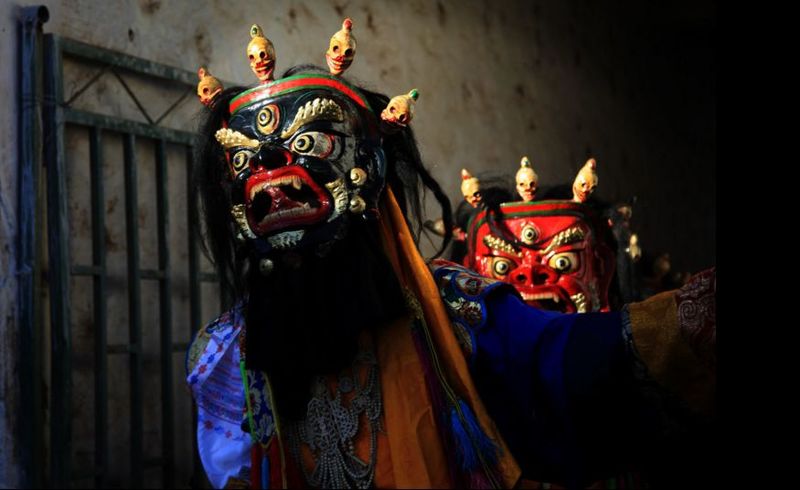
In the end, Buddhism defeated Bon and formed a unique religion that was different from Both Indian Buddhism and Central China Buddhism. People call it "Tibetan Buddhism" or "Lamaism".
When Padmasambhava, an Eminent Indian monk, used dharma divine power to subdue Bon deities, in order to win a wide range of followers among the people, he also absorbed Bon rituals as well as ghosts and spirits into Tibetan Buddhism. The mountain god, year god, dragon god, and other "earthly gods" in the Bon religion are counted as Buddhist Dharma Protectors and become an important part of the Tibetan masks.
Religious Masks
The religious masks mainly include Cham masks and hanging masks, used to express religious spirits and deified religious historical figures and animals. Among them, gods and animals are the most distinctive.
As early as the period of the Tubo Kingdom from the seventh to the ninth century AD, there were scenes of imitating animals in the folk dances performed in the sacrificial ceremonies of Bon religion, the primitive religion of Tibet, and masks were used at that time. Later, with the introduction and development of Tibetan Buddhism, a mask-wearing religious ritual dance gradually came into being in the temple - Cham dance. When Lamas dance, they act as deities by wearing masks, and costumes and using traditional Tibetan musical instruments to exorcise demons and disasters and pray for peace and happiness.
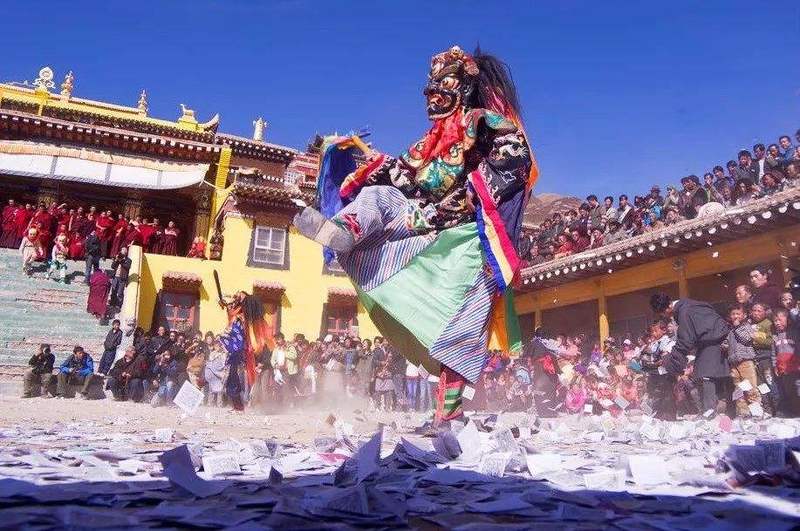
The cham dance of the Gelug Sect of Tashilhunpo Monastery in Shigatse has a long history. It has been passed down to the present through the efforts of successive Panchen Lamas and has been listed as China's National Intangible Cultural Heritage. There are a variety of different masks in cham. Some masks represent the Buddhas, the protector gods, and their attendants, such as the Yamantaka, the Guhyasamaja Tantra, and so on in Tantric Buddhism. The appearance of the mask can be peaceful and wrathful. The fierce forms are more common, showing the majesty, ferocity, and power to kill demons.
Still, there's also a kind of religious mask that is especially hung in the temples to be worshipped by incense and protected from wind and rain. Therefore, many beautifully crafted masks have been preserved intact. Its rise is closely related to the spread of Buddhism and the construction of monasteries.
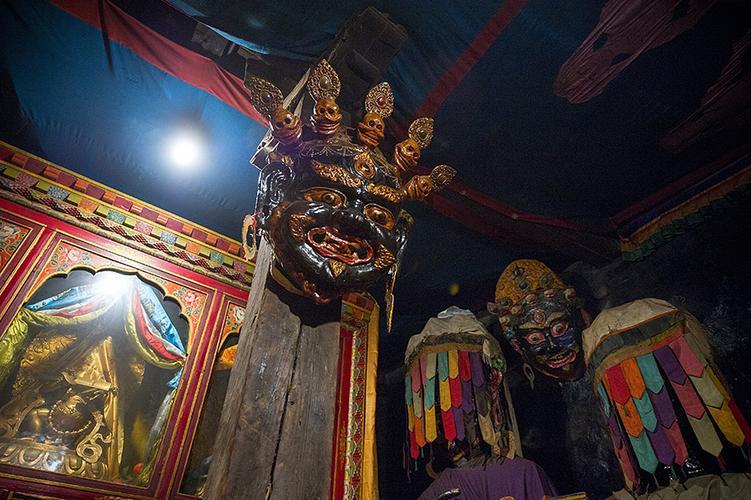
According to records, the Mahakala mask enshrined in the Sakya Monastery was passed down by an Indian guru through several generations and finally passed to Sachen Kunga Nyingpo, the first master of Sakya. As the god worshipped by Sakya school, it was hung in the temple and is also the main character during a Sakya cham dance.
Tibetan Opera Masks
Compared with religious masks, Tibetan opera masks have strong secular tendencies and folk colors. Masks in Tibetan opera mainly represent figures, gods, and animals in historical stories and myths.
In Tibetan opera, the masks of kings, ministers, lamas, old women, and old men have unique personalities. The shaping of gods, ghosts, and animals in the plot has obvious traces of religious mask influence, but most of them are personified and endowed with human emotion. The sincerity, kindness, beauty, and insincerity, villainy, and ugliness of human beings all got concrete expressions in the masks. Also, there are obvious differences in the artistic styles of Tibetan opera masks in different regions. The masks in the U-Tsang region are gentler, and the masks in the Kham region in eastern Tibet are fierce, weird and shocking.
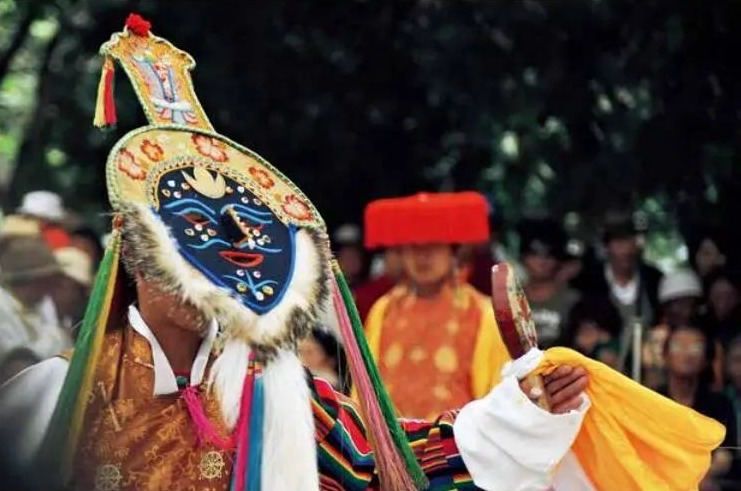
The masks are mostly colored, and different colors symbolize different characters, such as dark red for kings, light red for ministers, yellow for living Buddhas, blue for villains, and half-black and half-white for double-dealers. At the beginning of the Tibetan opera, the first character to appear is wearing a hunter's mask, which is mostly blue or cyan.
Tibetan Mask Classifications
Tibetan mask handicrafts are widely distributed, used in different areas, and made in different ways so there are many kinds and different forms.
In terms of production, it can be roughly divided into two categories: hard molding and soft molding, namely religious masks and opera masks. Religious masks are mostly hard-shaped, while folk opera masks are generally soft-shaped. The hard molding masks are usually three-dimensional or semi-three-dimensional. The hard-shaped masks are primarily used in religious Cham dances and temples hanging for sacrifice. Later, the production of Tibetan opera masks also adopted this production method. The soft molding masks mainly exist in the Kham area in eastern Tibet, all of which are the images of the common people. The craftsmen use a concise way to outline the expression and manner of mortals, to create various vivid masks.
In terms of texture, there are leather masks, wooden masks, copper masks, clay masks, linoleum masks, cardboard masks, etc.
In terms of use, it also can be divided into six types: cham dance masks, hanging masks, Tibetan opera masks, singing and dancing masks, Vbrasdkar blessing masks, and Nuo masks.
Conclusion
Cham dance masks and theatrical masks tend to be expressive and symbolic artistic styles, with bold and exaggerated shapes, accompanied by sonorous drum music and strong dance moves, very powerful.
Email response within 0.5~24 hours.


